Abstract
Previous research on applications of behavioral momentum has indicated that a high-probability (high-p) instructional sequence, in which a series of instructions for which there is a high probability of compliance is presented immediately before an instruction for which there is a low probability of compliance, is an effective method for increasing compliance. It is not clear, however, whether the procedure is effective when individuals actively attempt to escape from the instructional situation. In this study, we examined the effects of the high-p sequence, when implemented first alone and then later with an extinction component, as treatment for the self-injurious escape behavior of 2 individuals. Results showed that when the instructional sequence was implemented without extinction, rates of self-injury increased and percentage of compliance decreased. In addition, the percentage of trials occasioning escape behavior increased for both high- and low-probability instructions. When an extinction component was added to the high-p sequence, rates of self-injury and the percentage of trials containing self-injury decreased, and compliance increased. These findings suggest that extinction may be an important component of treatment when escape behavior such as self-injury accompanies noncompliance in instructional contexts and competes with compliant behavior.
Full text
PDF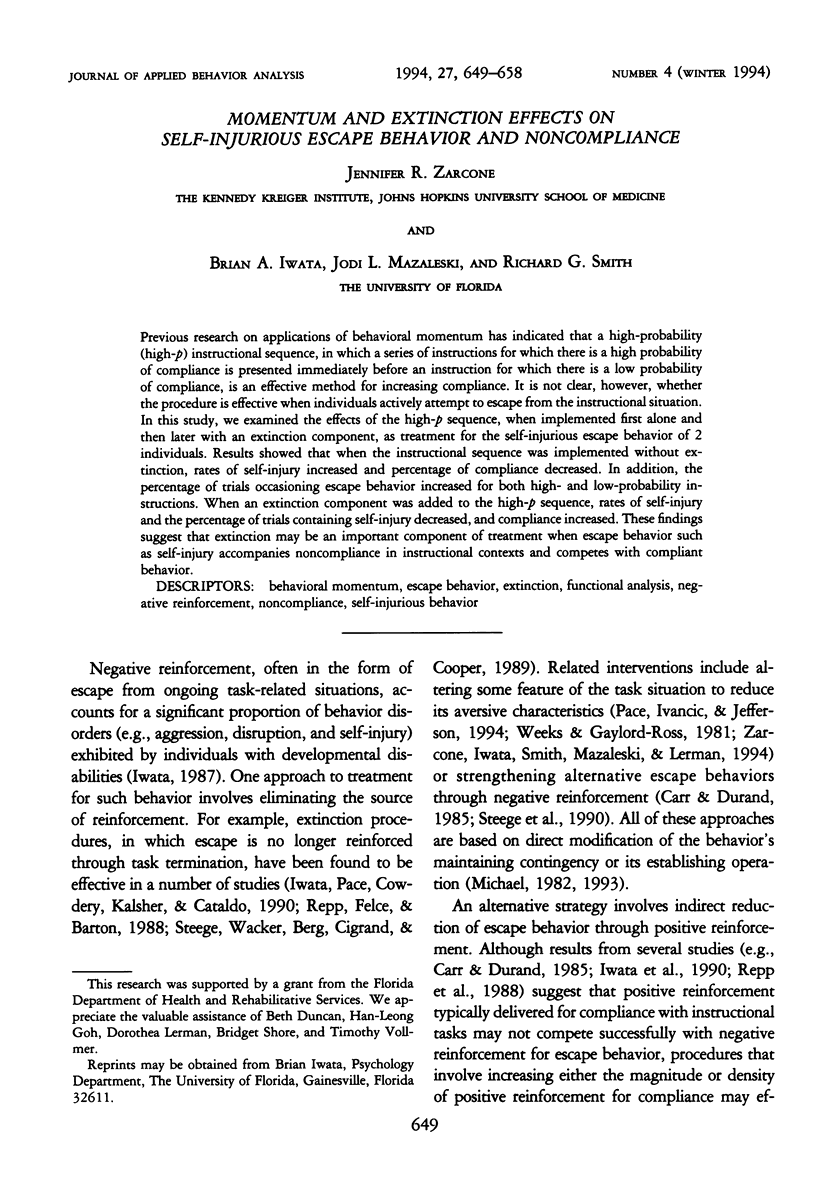
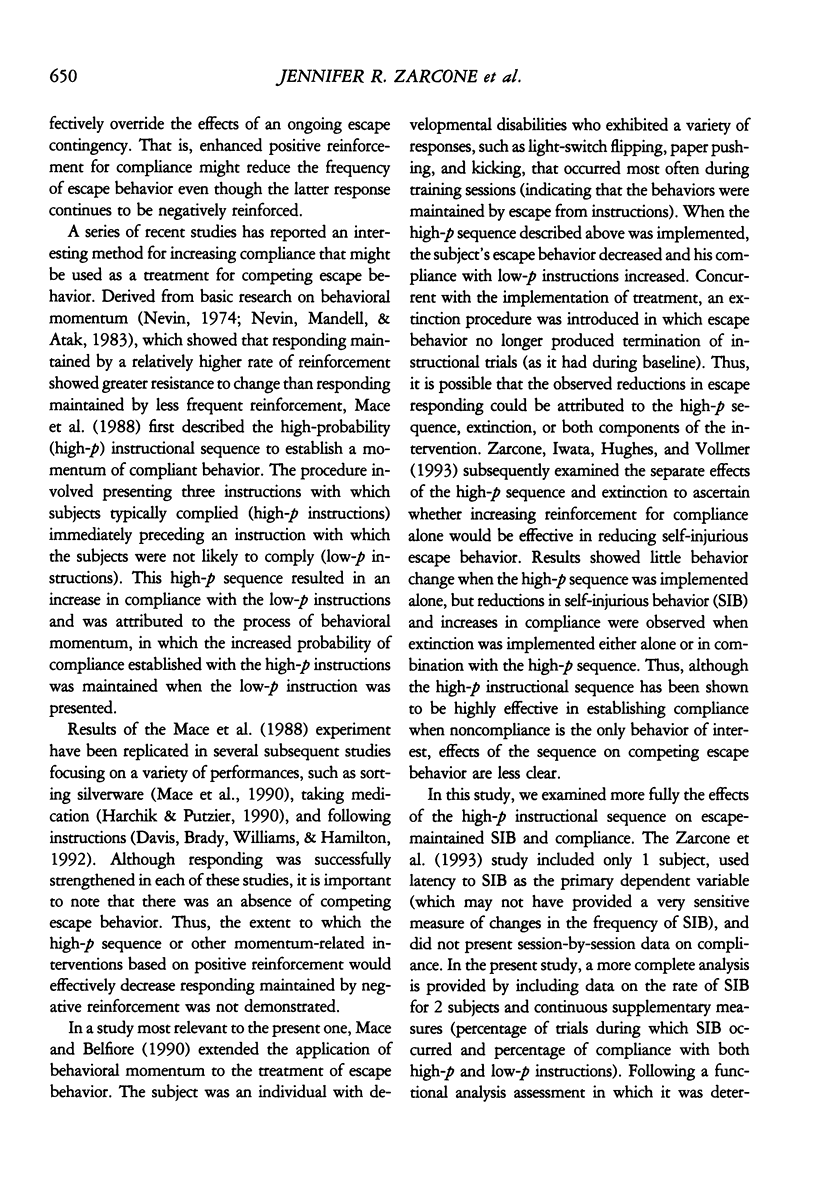
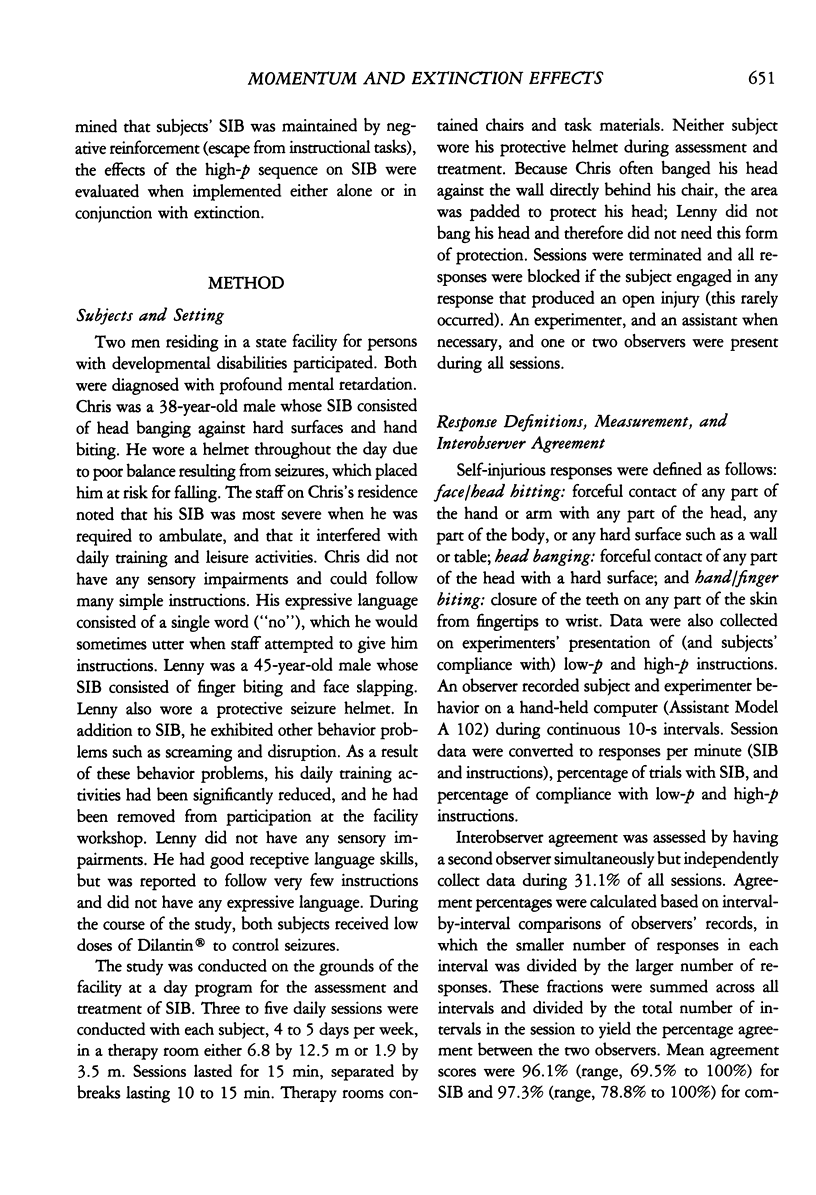
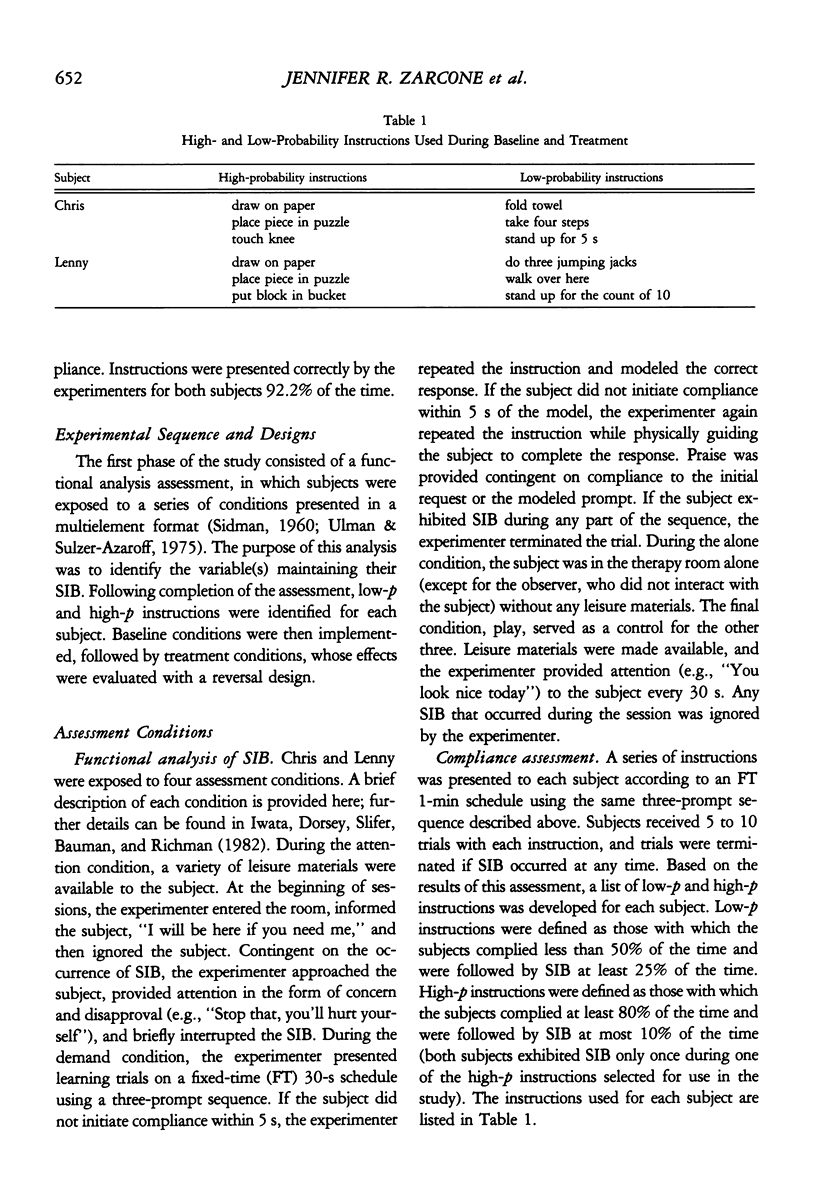
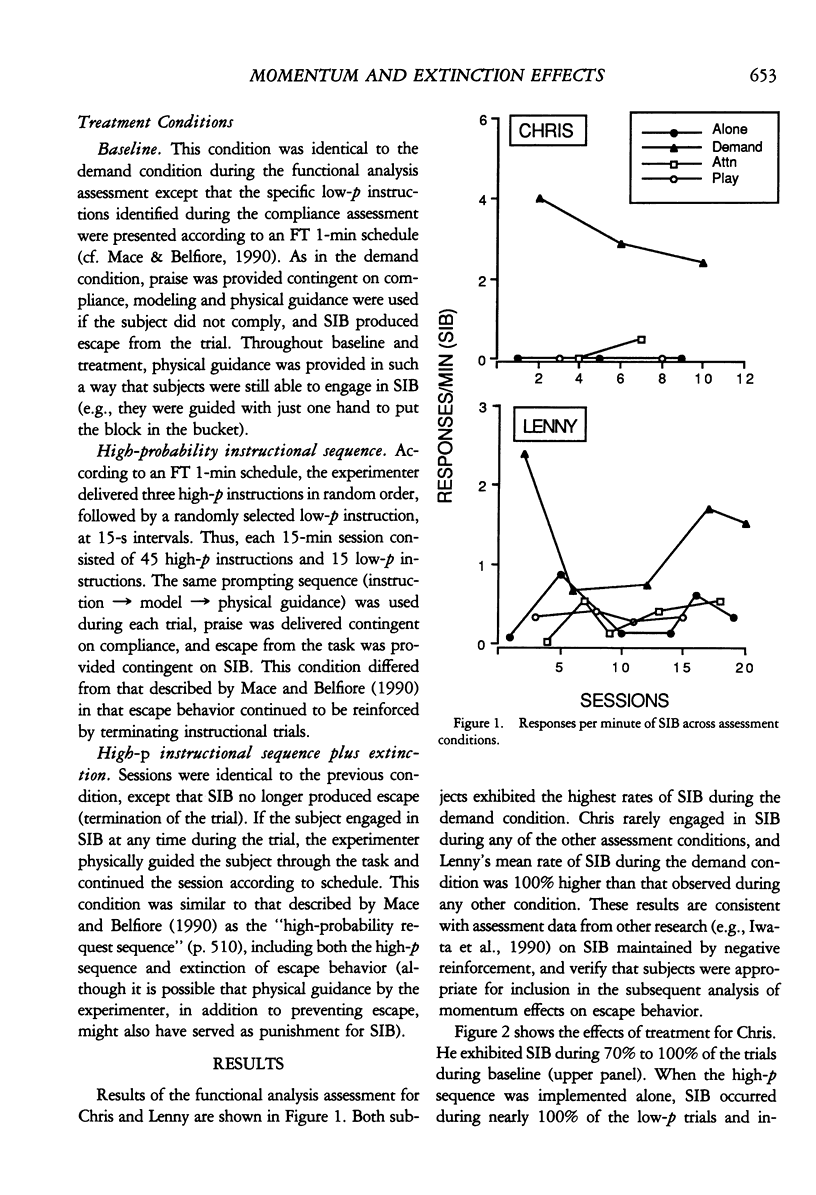
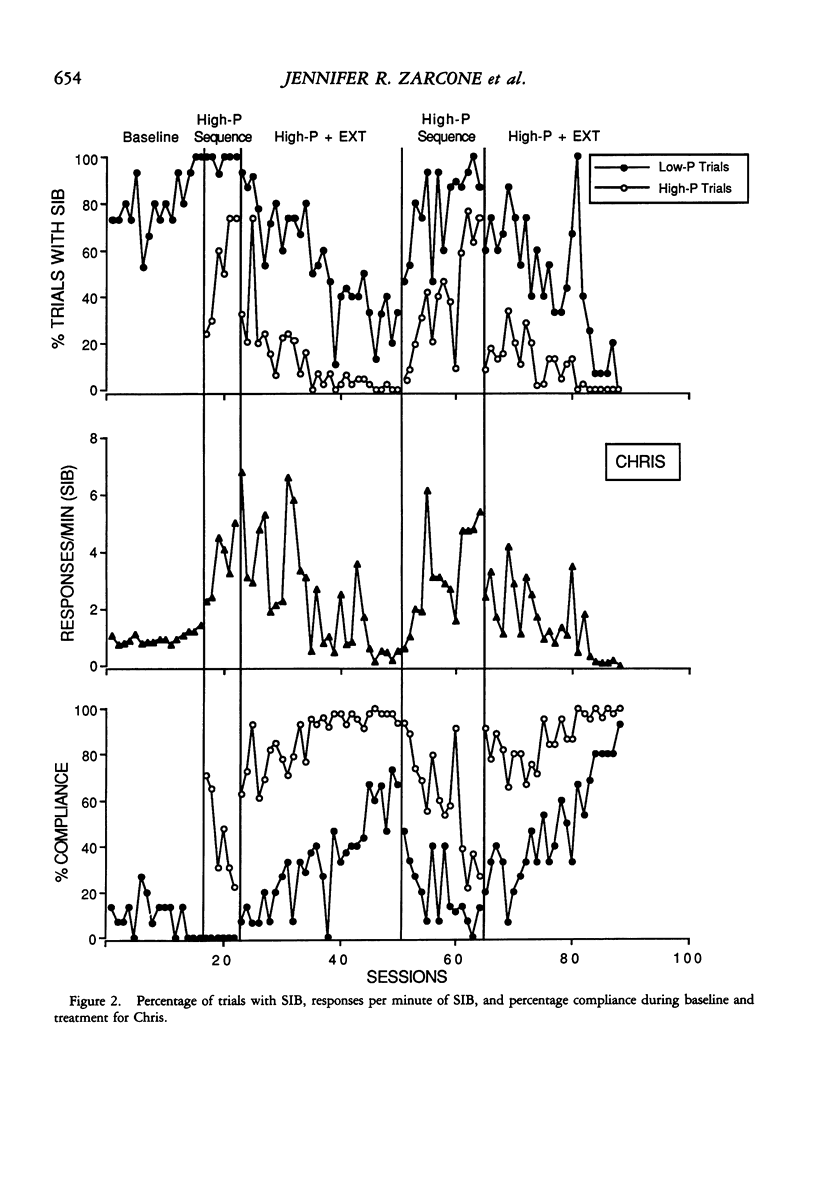
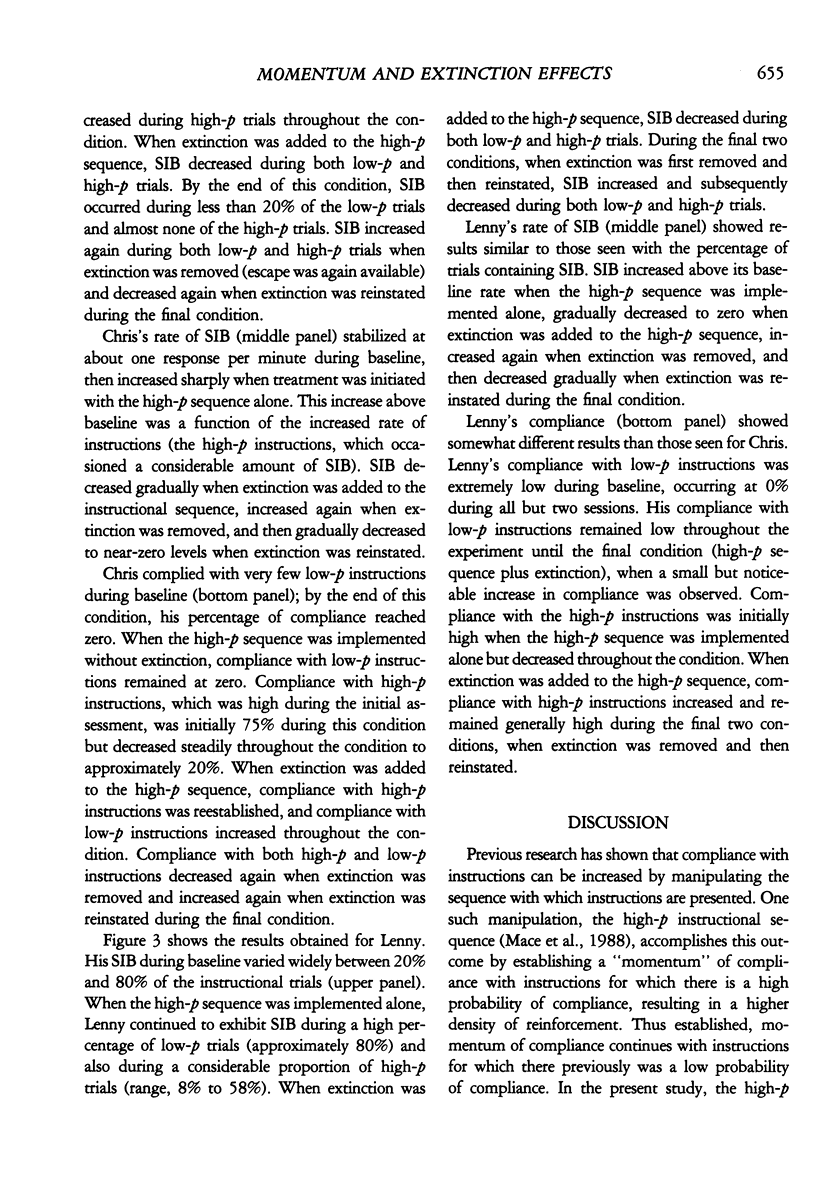
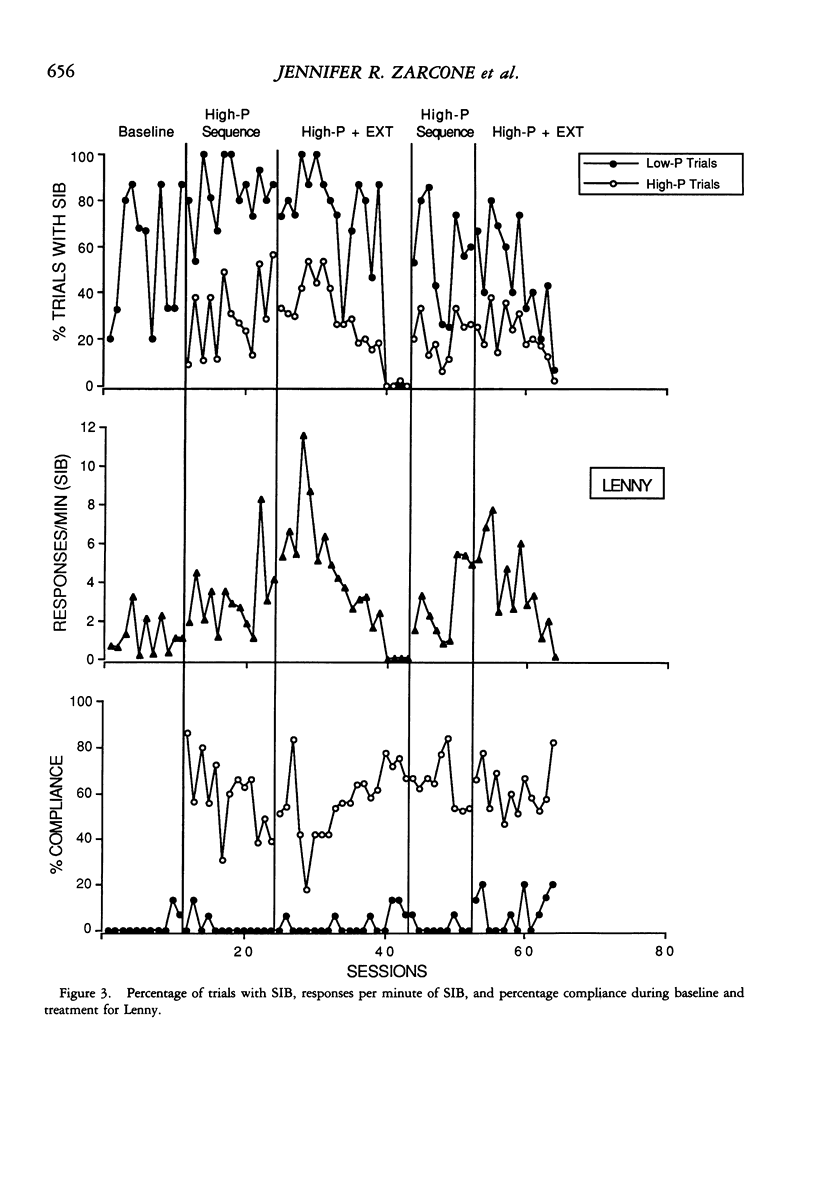
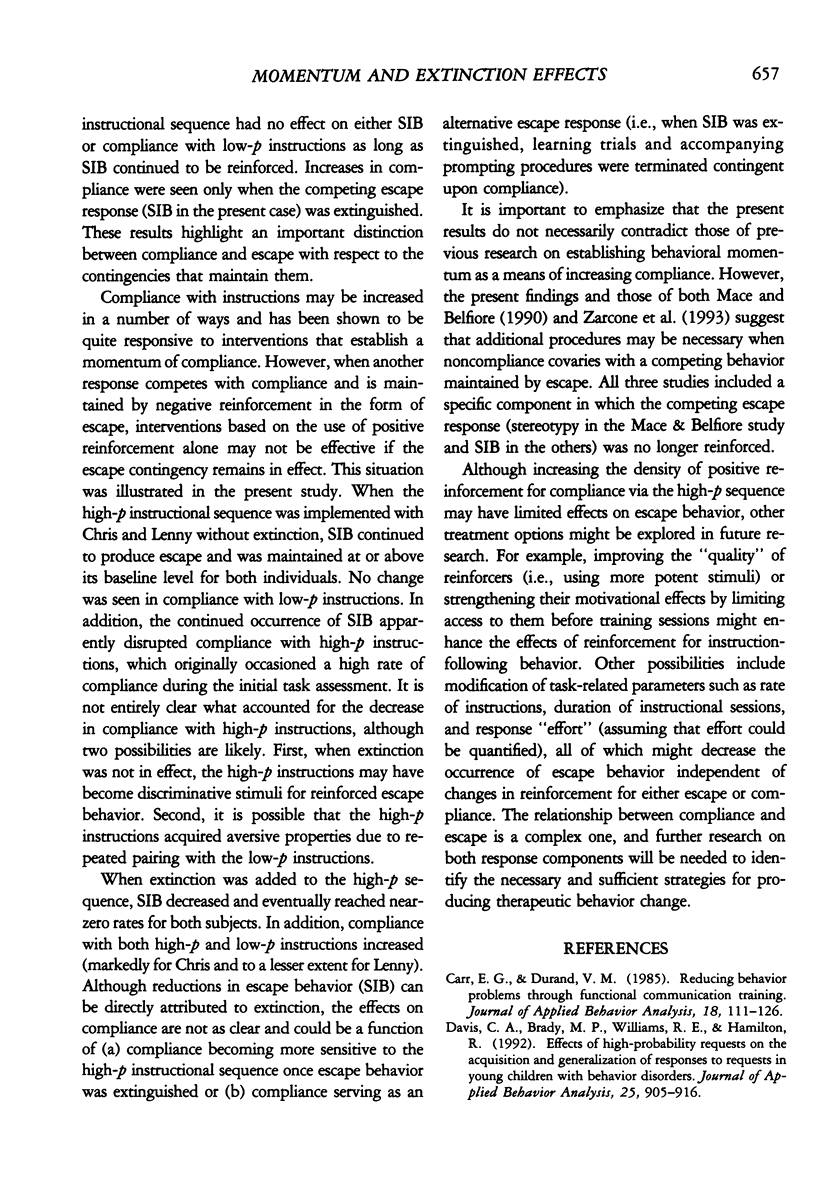
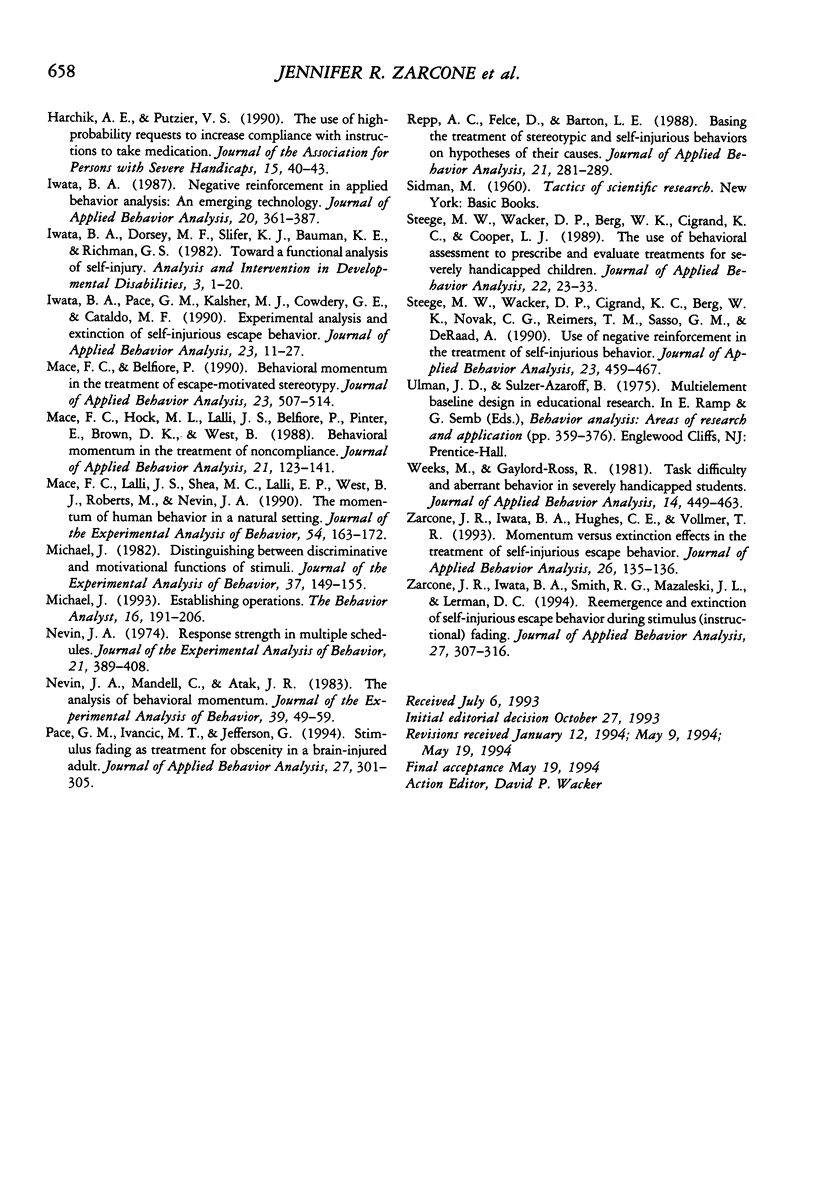
Selected References
These references are in PubMed. This may not be the complete list of references from this article.
- Carr E. G., Durand V. M. Reducing behavior problems through functional communication training. J Appl Behav Anal. 1985 Summer;18(2):111–126. doi: 10.1901/jaba.1985.18-111. [DOI] [PMC free article] [PubMed] [Google Scholar]
- Davis C. A., Brady M. P., Williams R. E., Hamilton R. Effects of high-probability requests on the acquisition and generalization of responses to requests in young children with behavior disorders. J Appl Behav Anal. 1992 Winter;25(4):905–916. doi: 10.1901/jaba.1992.25-905. [DOI] [PMC free article] [PubMed] [Google Scholar]
- Iwata B. A. Negative reinforcement in applied behavior analysis: an emerging technology. J Appl Behav Anal. 1987 Winter;20(4):361–378. doi: 10.1901/jaba.1987.20-361. [DOI] [PMC free article] [PubMed] [Google Scholar]
- Iwata B. A., Pace G. M., Kalsher M. J., Cowdery G. E., Cataldo M. F. Experimental analysis and extinction of self-injurious escape behavior. J Appl Behav Anal. 1990 Spring;23(1):11–27. doi: 10.1901/jaba.1990.23-11. [DOI] [PMC free article] [PubMed] [Google Scholar]
- Mace F. C., Belfiore P. Behavioral momentum in the treatment of escape-motivated stereotypy. J Appl Behav Anal. 1990 Winter;23(4):507–514. doi: 10.1901/jaba.1990.23-507. [DOI] [PMC free article] [PubMed] [Google Scholar]
- Mace F. C., Hock M. L., Lalli J. S., West B. J., Belfiore P., Pinter E., Brown D. K. Behavioral momentum in the treatment of noncompliance. J Appl Behav Anal. 1988 Summer;21(2):123–141. doi: 10.1901/jaba.1988.21-123. [DOI] [PMC free article] [PubMed] [Google Scholar]
- Mace F. C., Lalli J. S., Shea M. C., Lalli E. P., West B. J., Roberts M., Nevin J. A. The momentum of human behavior in a natural setting. J Exp Anal Behav. 1990 Nov;54(3):163–172. doi: 10.1901/jeab.1990.54-163. [DOI] [PMC free article] [PubMed] [Google Scholar]
- Michael J. Distinguishing between discriminative and motivational functions of stimuli. J Exp Anal Behav. 1982 Jan;37(1):149–155. doi: 10.1901/jeab.1982.37-149. [DOI] [PMC free article] [PubMed] [Google Scholar]
- Nevin J. A., Mandell C., Atak J. R. The analysis of behavioral momentum. J Exp Anal Behav. 1983 Jan;39(1):49–59. doi: 10.1901/jeab.1983.39-49. [DOI] [PMC free article] [PubMed] [Google Scholar]
- Nevin J. A. Response strength in multiple schedules. J Exp Anal Behav. 1974 May;21(3):389–408. doi: 10.1901/jeab.1974.21-389. [DOI] [PMC free article] [PubMed] [Google Scholar]
- Pace G. M., Ivancic M. T., jefferson G. Stimulus fading as treatment for obscenity in a brain-injured adult. J Appl Behav Anal. 1994 Summer;27(2):301–305. doi: 10.1901/jaba.1994.27-301. [DOI] [PMC free article] [PubMed] [Google Scholar]
- Repp A. C., Felce D., Barton L. E. Basing the treatment of stereotypic and self-injurious behaviors on hypotheses of their causes. J Appl Behav Anal. 1988 Fall;21(3):281–289. doi: 10.1901/jaba.1988.21-281. [DOI] [PMC free article] [PubMed] [Google Scholar]
- Steege M. W., Wacker D. P., Berg W. K., Cigrand K. K., Cooper L. J. The use of behavioral assessment to prescribe and evaluate treatments for severely handicapped children. J Appl Behav Anal. 1989 Spring;22(1):23–33. doi: 10.1901/jaba.1989.22-23. [DOI] [PMC free article] [PubMed] [Google Scholar]
- Steege M. W., Wacker D. P., Cigrand K. C., Berg W. K., Novak C. G., Reimers T. M., Sasso G. M., DeRaad A. Use of negative reinforcement in the treatment of self-injurious behavior. J Appl Behav Anal. 1990 Winter;23(4):459–467. doi: 10.1901/jaba.1990.23-459. [DOI] [PMC free article] [PubMed] [Google Scholar]
- Weeks M., Gaylord-Ross R. Task difficulty and aberrant behavior in severely handicapped students. J Appl Behav Anal. 1981 Winter;14(4):449–463. doi: 10.1901/jaba.1981.14-449. [DOI] [PMC free article] [PubMed] [Google Scholar]
- Zarcone J. R., Iwata B. A., Hughes C. E., Vollmer T. R. Momentum versus extinction effects in the treatment of self-injurious escape behavior. J Appl Behav Anal. 1993 Spring;26(1):135–136. doi: 10.1901/jaba.1993.26-135. [DOI] [PMC free article] [PubMed] [Google Scholar]
- Zarcone J. R., Iwata B. A., Smith R. G., Mazaleski J. L., Lerman D. C. Reemergence and extinction of self-injurious escape behavior during stimulus (instructional) fading. J Appl Behav Anal. 1994 Summer;27(2):307–316. doi: 10.1901/jaba.1994.27-307. [DOI] [PMC free article] [PubMed] [Google Scholar]


